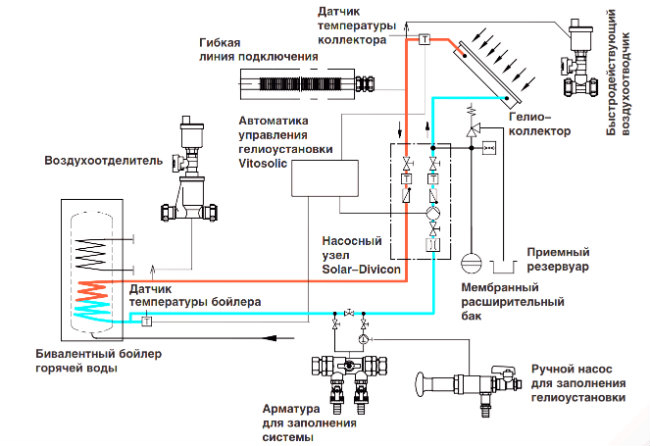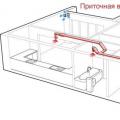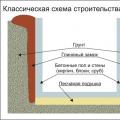With the growth of general well-being, more and more compatriots are discovering the charms of private home ownership. With an average cost of a good house comparable to the cost of a city apartment - how much better it is to live separately from everyone, in the fresh air! There is peace and quiet, and the absence of drinking neighbors and hooligans, silence outside the windows and grace.
When planning a move to a private house, you need to understand that all the responsibilities that previously lay on the shoulders of the house company will become yours.
At the same time, many, having moved into their home, or just starting to plan such a move, are faced with the fact that a whole range of work, previously performed by general house services, now falls entirely on the shoulders of the homeowner.
This includes cleaning the local area and roof care, and updating facades, and of course heating - without which it is impossible to imagine comfortable living conditions in our harsh climate.
Many people know how houses are heated using gas or solid fuel boilers, but not everyone has heard of such a direction as alternative heating of a private house, which is gaining more and more popularity in European construction, and from there it comes to us.
Alternative home heating is a term that implies the use of alternative sources of thermal energy for heating, or electrical energy converted into heat and obtained in an alternative way. It is about these systems that I want to talk a little more.
Geocollector systems
It cannot be said that such systems are a real alternative to heating in a private house, but they have already been successfully launched and are working in a number of households. Critical for such systems is the number of sunny days per year. This significantly limits the scope of their application.

A geocollector heating system is not suitable for everyone, since the operation of such a device is completely dependent on sunlight.
Geocollectors are certainly an alternative heating. The system works like this:
- Collectors are located directly on the roof of the house, which look like a system of tubes or flasks surrounded by special coatings, the purpose of which is to collect and retain the thermal energy radiated by the sun. They are closed to a common tank, from which the coolant moves through pipes to the house;
- Additionally, such systems can be equipped with a pump and even a heating element, which is switched on on cloudy days.
Among other things, such networks include thermal energy accumulators that accumulate potential during a sunny day and release it at night. In general, they can provide a fairly comfortable stay in the house, if we are talking about the southern regions, they are ineffective for a more severe climate.
Use of windmills
Here it is more appropriate to talk not about alternative heating of the house as a whole, but about an alternative source of energy for heating. Wind power generators have already become quite widespread and do not need additional introduction, everything is extremely simple.
A dynamo is installed on the support, equipped with a special nozzle that sets it in motion. The nozzle has several blades, the size and number of which determine the sensitivity of the windmill. Rotating on an axis like a weather vane, following the wind, and converting kinetic energy into electrical energy, they generate voltage. Then the energy enters the batteries, for further use in domestic purposes.
It can serve, among other things, for the operation of an electric heating boiler, providing heating in the house. This is already a real alternative to heating in a private house. The use of wind energy has been known for more than several centuries, there is nothing revolutionary here - this method has long been known and tested, there is no doubt about its reliability, but this is not the only really working way of alternative home heating.
Heat pump
This is a complex and modern engineering complex that provides really efficient heating at minimal cost during operation. A significant drawback of such a system is only the undeniable high cost of its installation. Nevertheless, many go to these expenses - after all, they pay off many times over over time. How nice it is to depend on no one, not to spend money on heating every month and, nevertheless, to be warm.
The principle of operation is simple and original. The heat pump pumps heat energy from the deep layers of the soil, which always remain heated, and transfers it to the entire structure. This is a simple system of pipes buried deep in the ground. Strictly according to the laws of physics - the heated coolant tends to rise, while it cools down, it returns, and the cycle closes.
In addition, in the summer heat, the system can serve to cool the house. The main thing to remember is that for its correct operation, a pump is needed, which means electricity. No electricity - no heating. So it’s worth having at least a generator, because you can never be completely sure that the light will not be turned off, and with it the heat will leave the pipes.
Another important point in the operation of such a system is the use of special antifreeze, which will increase the efficiency of the system. The savings will be very, very tangible.
Infrared systems
One of the really working options for alternative home heating are infrared systems, known as PLEN (film electric heater). They look like a thin film, consisting of several compressed layers, including a heating element. It emits thermal energy in the infrared spectrum and is usually mounted under the floor of the room.
Ease of installation and maintenance, as well as low power consumption and the absence of visible parts of the system - have made them very popular today. Heating goes from the floor to the ceiling, the air does not dry out, and at the level from the waist and above, the most comfortable temperature is created.
Management is provided by means of an electronic rheostat. The system is mounted on a subfloor, which is lined with a special material - isolon, which is a construction foam with foil applied on one side, reflecting heat into the room.
Installation can be done independently, there is nothing complicated in it. At the end of the assembly, the system is checked for operability and covered with dense polyethylene. Upon completion of these works, the floor is lined with laminate or linoleum.
Such a solution can be supplemented with separate infrared heaters installed in crowded places near windows and doors, which perform the function of additional thermal insulation of the room.
Conclusion
The article analyzed the alternative methods of home heating presented on the market today. Do not forget that the classic version of heating using a boiler, an expansion tank and a system of pipes and valves, despite significant energy costs, is the most preferred option for a harsh climate. And all the methods described in the article can become an addition to the basic heating system, but their independent use can jeopardize the issue of building heat supply in the winter. So do not forget to insure yourself with classics, no matter what modern system the market offers you.




